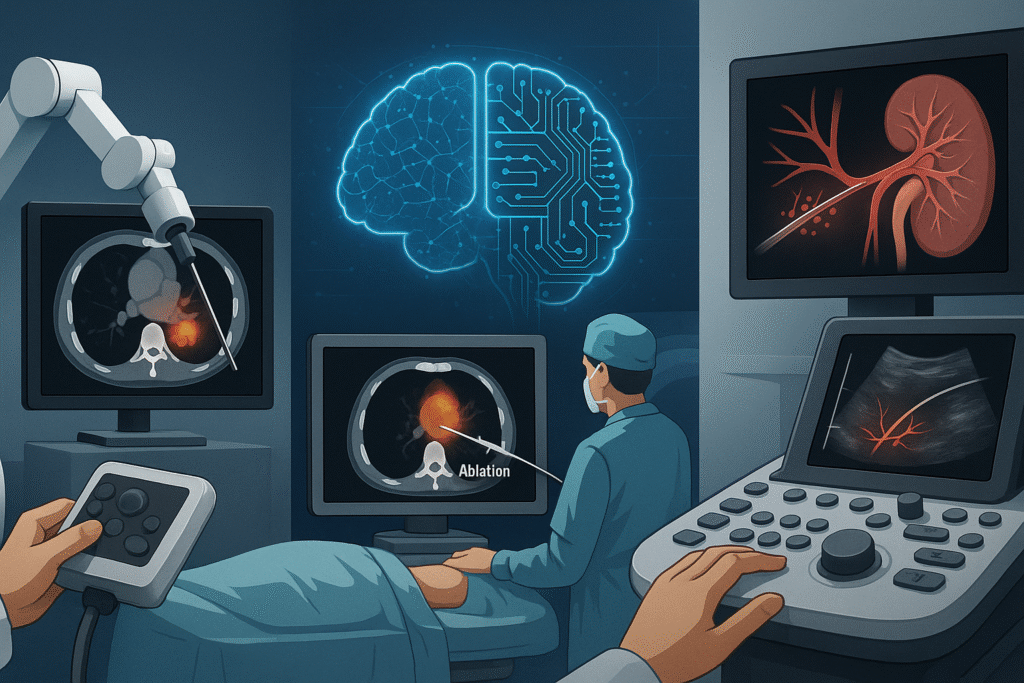
As technology continues to redefine modern medicine, interventional radiology (IR) is undergoing a transformative shift. At the forefront of this revolution is Dr Wessam Bou Assaly, a highly respected radiologist who is pioneering the integration of AI, robotics, and minimally invasive procedures to improve patient care and clinical outcomes.
From enhanced precision in tumor ablation to breakthroughs in embolization, Wessam Bouassaly and his peers are reshaping the landscape of radiological treatment. Here’s a closer look at five key innovations driving the future of interventional radiology.
1. AI Guidance for Precision Ablation and Biopsy
The traditional challenges of performing needle-based interventions—such as tumor ablation or targeted biopsies—are being overcome through AI-powered navigation systems. Using real-time data and predictive modeling, these systems help radiologists accurately locate and treat lesions, even in hard-to-reach areas.
Dr. Wessam Bou Assaly has championed the use of AI-guided ablation, especially in treating liver, lung, and kidney tumors. By integrating machine learning algorithms with PET/CT or MRI images, AI enhances targeting accuracy while reducing complication risks. This allows clinicians to perform thermal ablation (e.g., radiofrequency or microwave) with greater confidence, ensuring maximum damage to abnormal tissues and minimal harm to surrounding structures.
2. Robotics-Assisted Interventional Procedures
The use of robotics in interventional radiology is opening up a new dimension of precision and control. Robotic systems can execute micro-movements with high stability, which is especially beneficial in procedures involving the spine, vascular system, or deep-seated tumors.
Wessam Bou Assaly recognizes the promise of robot-assisted interventions for increasing safety, decreasing radiation exposure to the operator, and expanding the range of procedures that can be done percutaneously. For instance, robotic arms equipped with haptic feedback and 3D imaging can guide catheters or needles to the exact anatomical location with sub-millimeter accuracy.
This technology is especially useful in stereotactic biopsies, ablation therapies, and complex neurovascular interventions, enabling more effective outcomes with less trauma.
3. New Embolization Techniques
Embolization—the process of blocking blood vessels to cut off blood supply to specific areas—is gaining momentum as a minimally invasive alternative to traditional surgery. Dr Wessam Bouassaly is particularly involved in the development and application of newer embolization approaches that target conditions once considered difficult to manage without invasive surgery.
One standout advancement is Prostate Artery Embolization (PAE), a technique used to treat benign prostatic hyperplasia (BPH). Unlike conventional surgery, PAE involves inserting a catheter through the groin to block the arteries feeding the enlarged prostate, causing it to shrink over time. This procedure results in fewer complications, shorter recovery periods, and significant symptom relief.
Beyond BPH, embolization is also being used in:
Uterine fibroid treatment
Liver tumor management
Hemorrhage control
Arteriovenous malformations
Dr. Wessam Bou Assaly continues to refine these techniques to make embolization more effective, safer, and widely accessible.
4. Image-Guided Tumor Therapies
Combining real-time imaging with advanced interventional tools, image-guided tumor therapies allow clinicians to deliver localized treatments like chemoembolization, radioembolization, and cryoablation with pinpoint precision. These therapies are instrumental in managing cancers of the liver, kidneys, and lungs, offering hope to patients who are not candidates for surgery.
Wessam bou assaly has focused extensively on integrating PET and MRI data into interventional workflows, ensuring that these image-guided treatments remain both safe and highly personalized. With continuous improvements in imaging resolution and data analytics, physicians can better visualize tumor margins and adapt strategies in real-time.
5. The Road Ahead: Personalized, Minimally Invasive Care
The convergence of artificial intelligence, robotics, and targeted radiology is making personalized, minimally invasive care more feasible than ever before. From early diagnosis to treatment, interventional radiology is enabling faster recoveries, fewer hospital stays, and improved quality of life.
Thanks to pioneers like Dr. Wessam Bouassaly, interventional radiology is no longer limited to niche procedures—it is becoming a mainstream tool in the fight against cancer, vascular diseases, and chronic health conditions.
Conclusion
The field of interventional radiology is undergoing a radical evolution, driven by technological advancements that merge diagnostics and therapy with exceptional accuracy. Dr Wessam Bou-assaly’s work in AI-assisted ablation, robotic intervention, and embolization techniques showcases how cutting-edge innovations are improving patient outcomes while reducing procedural risk.
With continued innovation and clinical leadership from professionals like Dr. Wessam Bou Assaly, the future of medicine is not only smarter—but also more compassionate, efficient, and patient-focused.
